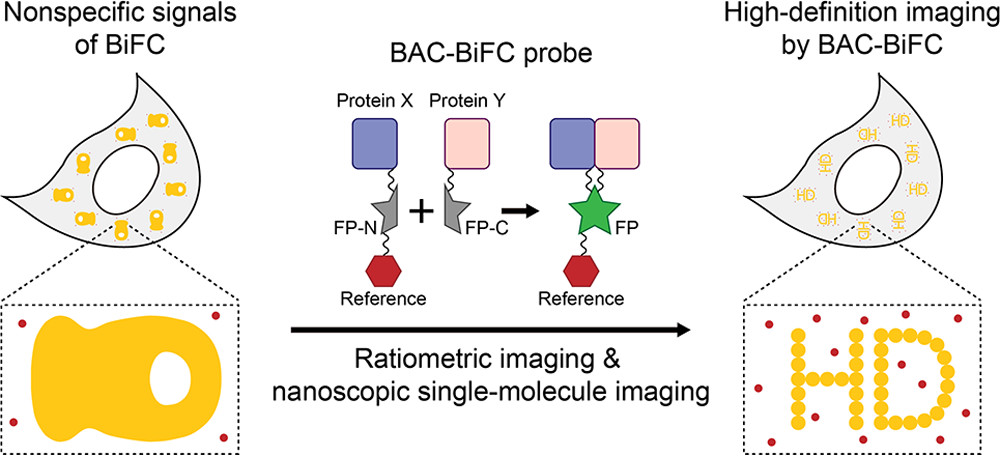Shiqi Mao,Yachen Ying,Zhao Ma,Yantao Yang,Antony K. Chen*
Abstract
Bimolecular Fluorescence Complementation (BiFC) is a versatile approach for intracellular analysis of protein–protein interactions (PPIs), but the tendency of the split fluorescent protein (FP) fragments to self-assemble when brought into close proximity of each other by random collision can lead to generation of false-positive signals that hamper high-definition imaging of PPIs occurring on the nanoscopic level. While it is thought that expressing the fusion proteins at a low level can remove false positives without impacting specific signals, there has been no effective strategy to test this possibility. Here, we present a system capable of assessing and removing BiFC false positives, termed Background Assessable and Correctable-BiFC (BAC-BiFC), in which one of the split FP fragments is fused with an optically distinct FP that serves as a reference marker, and the single-cell fluorescence ratio of the BiFC signal to the reference signal is used to gauge an optimal transfection condition. We showed that when BAC-BiFC is designed to image PPIs regulating Human Immunodeficiency Virus type 1 (HIV-1) assembly, the fluorescence ratio could decrease with decreasing probe quantity, and ratios approaching the limit of detection could allow physiologically relevant characterization of the assembly process on the nanoscale by single-molecule localization microscopy (SMLM). With much improved clarity, previously undescribed features of HIV-1 assembly were revealed.
https://doi.org/10.1021/acsnano.1c03242

